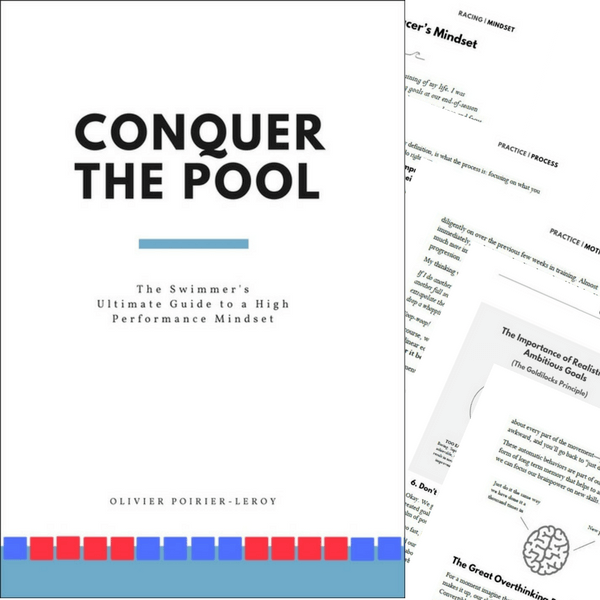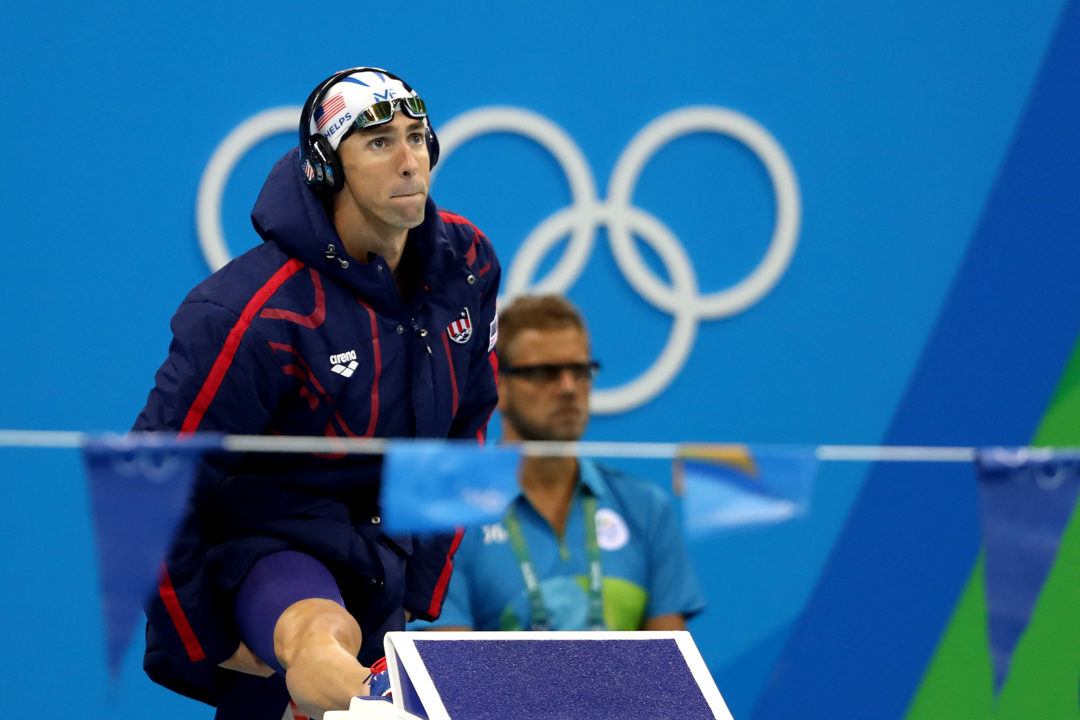Visualization is a proven tool that swimmers can use to get better at dealing with tough situations. Here’s a three-step plan swimmers can start with today.
When the pressure is on, and it’s time to strap on your racing goggles and tech suit and smash on some personal best times, mental toughness is critical.
Mental toughness helps you stay focused in the midst of chaos. Manage your intensity levels. And stay on track no matter what is happening in the lane next to you.
Look…
We both KNOW that not everything is going to go perfectly on race day. Your goggles spring a little leak. Your suit rips off the start. The competition drops a record-shattering time in the lane next to you.
Your job isn’t to try and control EVERYTHING.
It’s to practice and prepare your reaction to adversity so that no matter what happens, you stick to YOUR plan.
Here’s a highly practical 3-step plan you can use mental imagery to be mentally tough on race day.
“You are always ready for whatever comes your way.”
Mental imagery is a powerful and proven mental skill for swimmers. The applications are a-plenty:
- Want to master a skill? Mental imagery can help you learn that skill or a new technique.
- Want to get motivated? Mental imagery has been shown to be a more effective motivational tool than psych-up talk.
If there is something you want to improve in the water, there is a way mental imagery can help you.
Including preparing you for the unexpected adversity that happens in competition (or practice, for that matter).
Michael Phelps is well-known for having used visualization in his preparation.
Each night in bed, after he got himself relaxed, he would close his eyes and run through his events in his mind.
But Phelps did something that was really smart with his visualization. He didn’t just picture his *perfect* race; he ran alternate outcomes and variations.
“When I would visualize, it would be what you want it to be, what you don’t want it to be, what it could be. You are always ready for whatever comes your way.” — Michael Phelps
Using mental imagery to prepare for adversity
Here’s how swimmers can use visualization for better swimming:
Grab a pen and a piece of paper.
Write out the scenarios where you have struggled in practice and in competition.
Get down and deep with the situations and scenarios where things fall off the rails for you in the pool.
For example:
- I have a hard time swimming in discomfort. I save energy when I know shouldn’t.
- I get in my head before big races.
- I have a hard time bouncing back if I don’t swim as fast as I should.
You get the idea.
Writing out the issues and adversity in the water isn’t too difficult. We KNOW what they are.
It’s the next step that is the fun part.
You are going to close your eyes, breathe deeply, and let your body sink into the floor.
Using mental imagery, walk yourself through the thing you have struggled with in the past (and are likely to again in the future).
Feel it. Feel the moment. Everything about the situation should be in your visualization. The temperature of the water. The chlorine in the air. The nervous churning in your belly.
If you are doing this properly, your hands will get clammy, your heart rate will increase, and you might even get the urge to pee.
(This is just how AMAZING your brain is with visualization; your body doesn’t even know its an imagined experience.)
Now…
It’s time for you to respond.
Feel the discomfort, and then the response:
- You don’t give up when you miss a turn.
- You stick to your race strategy when a competitor takes off to an early lead.
- You tell yourself it’s okay to be in discomfort during the main set and keep at it.
- You stay calm and composed when a competitor talks smack behind the blocks.
- You feel your legs turning to cement but keep kicking like crazy.
- You tell yourself to stick to your process when you aren’t improving as fast as you’d like.
The applications for this tool are almost endless.
You can use this stuff for non-pool stuff too: not hitting the snooze button before early morning practice, choosing to make a healthy meal when you are exhausted at the end of the day, etc.
Visualize the spots in your life where there is resistance… and add a positive response to it.
Practice adversity
To sum up this strategy for kicking adversity in the butt, follow this three-step plan:
- Write out the moments of adversity you experience in the water.
- Visualize the adversity. Really feel it.
- Visualize yourself overcoming it or pushing through.
The point of practice and training is to prepare you for the pressure, rigors, and adversity of competition. Visualization is simply another weapon to prepare you.
Each night, run through your scenarios and build an inventory of reps, so that when adversity does strike (and you KNOW it will!), you will have a calming and confidence-boosting sensation of having “been there and done that.”
From there, confidence and fast swimming will flourish.
ABOUT OLIVIER POIRIER-LEROY
Olivier Poirier-Leroy is a former national level swimmer. He’s the publisher of YourSwimBook, a ten-month log book for competitive swimmers.
 He’s also the author of the recently published mental training workbook for competitive swimmers, Conquer the Pool: The Swimmer’s Ultimate Guide to a High Performance Mindset.
He’s also the author of the recently published mental training workbook for competitive swimmers, Conquer the Pool: The Swimmer’s Ultimate Guide to a High Performance Mindset.
It combines sport psychology research, worksheets, and anecdotes and examples of Olympians past and present to give swimmers everything they need to conquer the mental side of the sport.
Ready to take your mindset to the next level?
Click here to learn more about Conquer the Pool.
COACHES & CLUBS: Yuppers–we do team orders of “Conquer the Pool” which includes a team discount as well as complimentary branding (your club logo on the cover of the book) at no additional charge.
Want more details? Click here for a free estimate on a team order of CTP.

That was super helpful! As a swimmer myself that suffers from some serious pre-race nerves this is a huge help! Please write more articles addressing this because I am always up for new ways to improve! 🙂